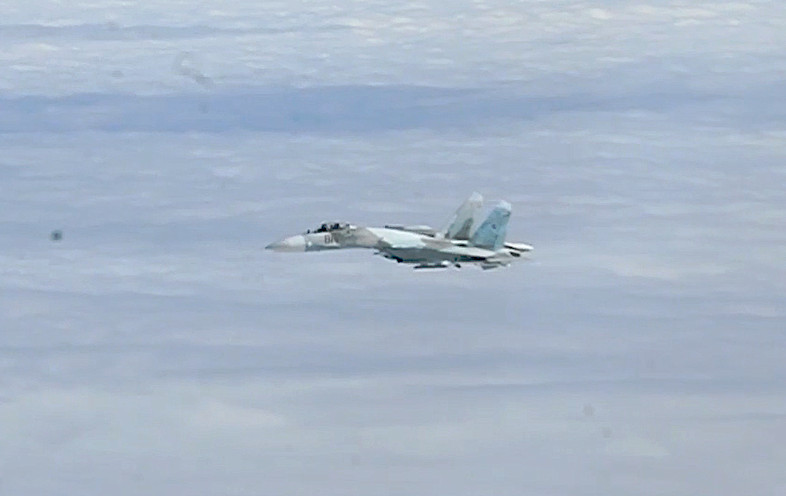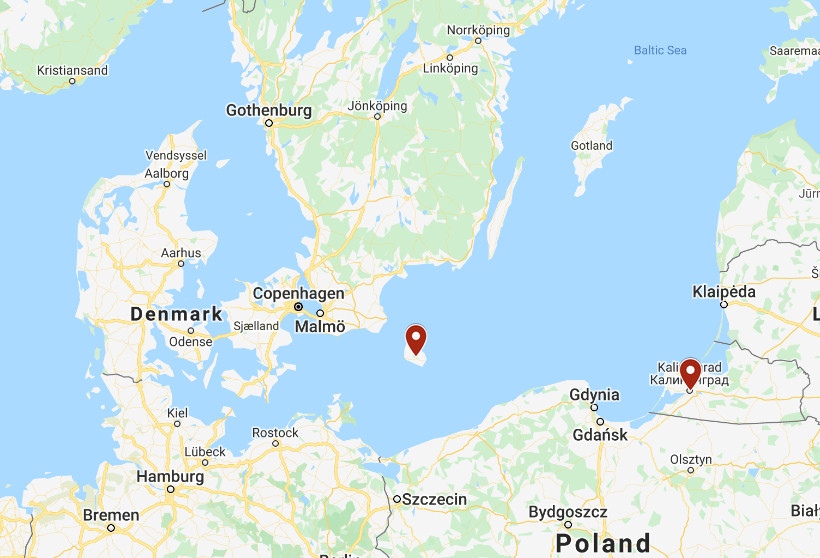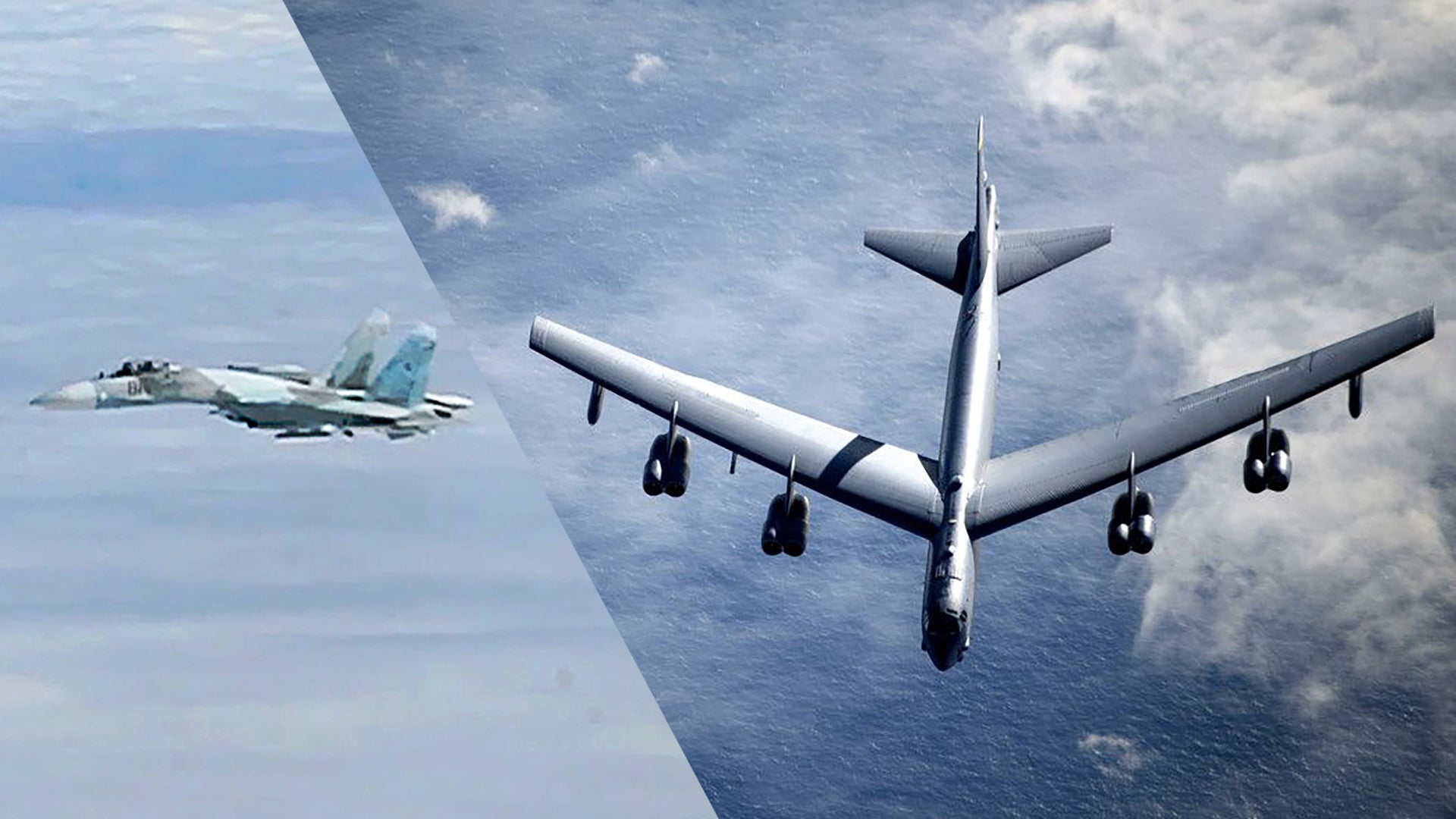NATO says that a Russian Su-27 Flanker fighter jet committed a “significant violation” of Danish airspace while intercepting a U.S. Air Force B-52H Stratofortress in the Baltic Sea region last week. The incident occurred as six of these heavy bombers, including four from a detachment presently forward-deployed in the United Kingdom, were conducting overflights of all 30 members of the Alliance, including the United States and Canada. Over the weekend, the Pentagon released video showing another Flanker turning directly in front of one of a B-52 that was taking part in this unprecedented mission as it flew over the Black Sea, which The War Zone
NATO’s Allied Air Command says that the Su-27, operating from Russia’s Kaliningrad enclave on the Baltic Sea, intercepted the B-52 as it was approaching Denmark’s Bornholm Island on Aug. 28, 2020. Rather than turning back, the command says the Flanker followed the bomber “well into Danish airspace over the island,” resulting in a serious breach “of airspace of a NATO nation.”
“This incident demonstrates Russia’s disrespect of international norms and for the sovereign airspace of an Allied nation,” U.S. Air Force General Jeff Harrigian, head of Allied Air Command, as well as U.S. Air Forces in Europe (USAFE), said in a statement. “We remain vigilant, ready and prepared to secure NATO airspace 24/7.”


The Royal Danish Air Force launched their own quick reaction force of F-16AM/BM Viper fighter jets in response to the incident, but they were unable to intercept the Russian Su-27 before it turned back for Kaliningrad.
The video below shows Danish F-16AM fighter jets flying alongside a B-52 during the flights on Aug. 28 that took the bombers over all 30 NATO members.

Russian intercepts of NATO aircraft in the narrow confines of the Baltic Sea are common, as are NATO intercepts of Russian aircraft, and airspace violations are certainly not unheard of. In September 2019, Estonia, another member of the Alliance, said a Russian Su-34 Fullback combat jet flew into its airspace along the Baltic. In 2016, Finland registered a complaint about a similar intrusion by a pair of armed Flankers into its airspace in the adjacent Gulf of Finland.
There is an especially long history of Russian intercepts of NATO intelligence, surveillance, and reconnaissance aircraft, as well as those from other European countries the region, flying near Kaliningrad, which is an immensely strategic Russian territory. In 2014, Russian fighters chased a U.S. Air Force RC-135V/W Rivet Joint spy plane into Swedish airspace in the Baltic. A year later, the Pentagon announced a “sloppy” and “unprofessional” intercept of an RC-135U Combat Sent in the region.
The enclave, which is home to the Russian Navy’s Baltic Fleet, as well as a unit equipped with Iskander-M nuclear-capable ballistic missiles and a major air base, is sandwiched between Poland and Lithuania, who are both NATO members.
However, this latest airspace violation over Danish territory comes amid a noticeable increase in friction between Washington and Moscow, in particular. As noted, this incident occurred on the same day that another Flanker performed the potentially dangerous “thumping” maneuver in front of the B-52 over the Black Sea. These are just some of the incidents in a recent spate of tit-for-tat signaling and other posturing between the United States and Russia that you can read more about in this recent War Zone piece.
This Danish airspace violation by a Russian Su-27 shows that whatever combination of present geopolitical factors might be driving these incidents, they are truly multi-faceted in nature and show no sign of slowing down at the moment.
Contact the author: joe@thedrive.com
